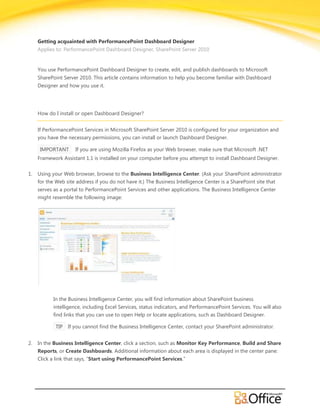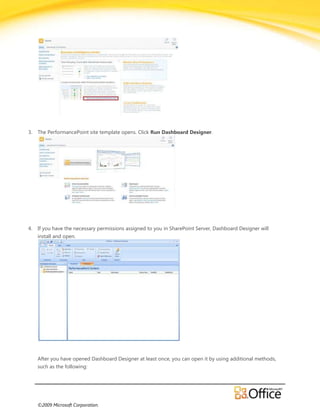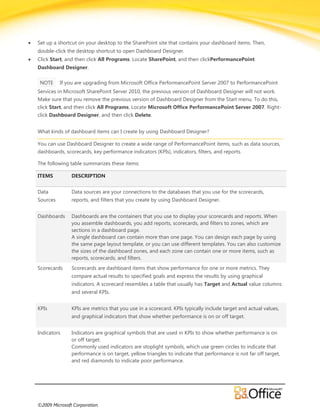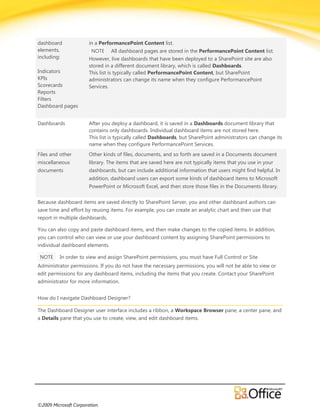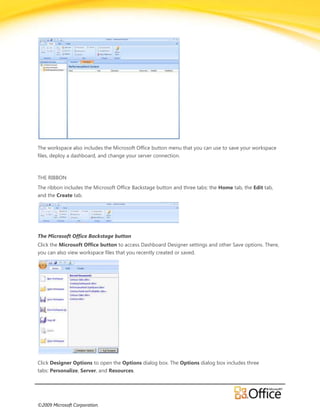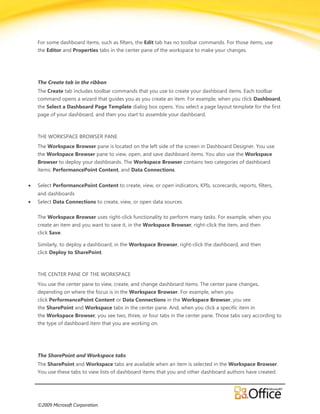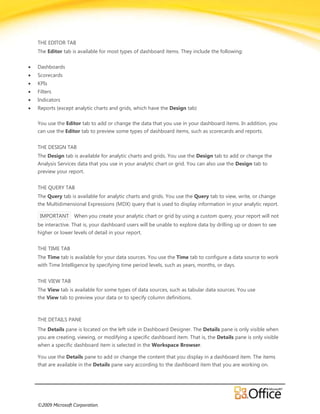The document provides guidance on using PerformancePoint Dashboard Designer for creating, editing, and publishing dashboards in Microsoft SharePoint Server 2010. It details the installation process, types of items you can create, their storage locations, user interface navigation, and the dashboard designer's features. Additionally, it describes how to manage permissions and utilize various editing tools within the software.
